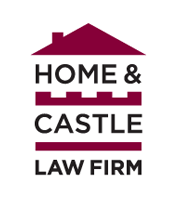Lawsuits cost a business time and money, and can often bankrupt a business. Businesses must prepare and organize their legal affairs to reduce the possibility and costs of litigation. 5 simple steps can help you avoid and decrease litigation costs.
1. Incorporation: Protect Your Personal Assets
Corporations have limited liability and proprietorships and partnerships do not. Corporations are legally distinct from their shareholders, who only risk their investment. Partners and sole proprietors are not legally separate from their businesses and risk everything that they own. A corporation acts like a special insurance policy with a one-time premium that protects your personal assets from the people that deal with your business. Corporations can also provide tax deferral benefits that are not available to sole proprietors or partnerships. Incorporation prepares you for success while protecting you from the worst eventualities.
2. Client Contracts, Waivers, and Disclaimers: Improve Relationships
Most disputes are usually based on an honest misunderstanding of the deal. Written contracts commit parties to perform certain actions, but more importantly they limit what is required by each party and determine which party bears which risks. Outlining each party’s obligations can result in earlier payment and less wasted resources. Detailing exclusions and risks makes the parties more profitable by avoiding or limiting costly disputes and litigation. Parties to a written contract are also more likely to be satisfied at completion of the contract and commit to repeat business, which means more profit.
Consider a contractor hired to remodel a room in a house where a written contract is not used. One party may believe certain work is included in the price, and the other party may not. Who is responsible to move or cover the furniture? Who is responsible for certain types of damages and to what amount? Is there a warranty on materials or labour, how long is each and what do they include and exclude? Is there a deadline for completion?
Client contracts, waivers, and disclaimers are common documents that, when drafted properly, can protect your company. Contracts outline both benefits and obligations, risk placement and are the essence of the business relationship. Waivers, disclaimers and acknowledgments are particular risk reduction tools in situations where one party wishes to place a risk upon the other, who would not normally bear the burden. These documents can be used separately, but are often used in concert. Clear agreements make for better and happier business relations that almost always avoid court.
3. Employment Contracts, Policies, and Procedures: Control Possible Damages
Employees are often the most important assets of a company and they are usually the largest liabilities. Long-term or tenured employees represent significant risks to the companies they work for, if they are terminated, laid-off, or unable to work due to disability. More than one company has gone bankrupt on account of the stringent obligations of employers under Ontario law.
An employment contract can control certain risks or exposures that the company has, and employment policies and procedures can control others. Every company needs to understand employment standards before they hire an employee, as it may be too late afterwards to enforce a subsequent contract with that individual.
4. Risk Assessment and Reduction: Avoid Costs and Catastrophe
Assessing and reducing risk is a two-part process where you must determine and prioritize risks particular to your company and industry, in addition to the normal risks of business. When risks are identified and prioritized, each risk can then be systematically examined and targeted for possible reduction. Every company has unique risks based on its industry and operational style. These risks need to be prioritized based on likelihood and dollar value exposure in order to move to the next step.
A particular risk can be reduced in many ways. A specific contract, waiver, disclaimer, acknowledgment or other document can reduce or eliminate a specific risk. Insurance may be another route. Sometimes a risk assessment may lead to the elimination of a product or service, when the costs to reduce the risks and/or the risks themselves outweigh the economic benefits. Most companies’ change the way they do business after a risk assessment and some even change what business they do. Risk assessment and reduction are important in protecting a company from major hazards because most perils are foreseeable.
5. Quick Response and Settlement: Lessen the Impact of Disputes
There is justice and then there is legal reality. Many people involved in business litigation believe that when they tell their side of a story to a judge they will win and get everything they deserve. That belief is a legal fiction.
A party may be 100% successful in a claim, but the party will never ever be made whole. The costs of lawyers, experts, lost time, delay in recovery, stress, and the distraction from the business are never fully recovered. In short, going the distance in a lawsuit should usually be avoided if a reasonable settlement can be reached. Quick response and settlement in problem situations prevents the spending of good money to litigate on the mistaken belief that a successful lawsuit will cover all costs and expenses.
No business can completely protect itself from the possibility of a lawsuit, however, the 5 simple steps outlined above can greatly reduce the chances and costs of litigation. Incorporating can protect your personal assets. Client and employment agreements reduce misunderstandings and litigation costs. Risk assessment and reduction improve the bottom line and can save a business from a catastrophe. Quick response and settlement of disputes also save money. Remember, every lawsuit prevented or reduced in cost greatly affects your business’ profitability.
